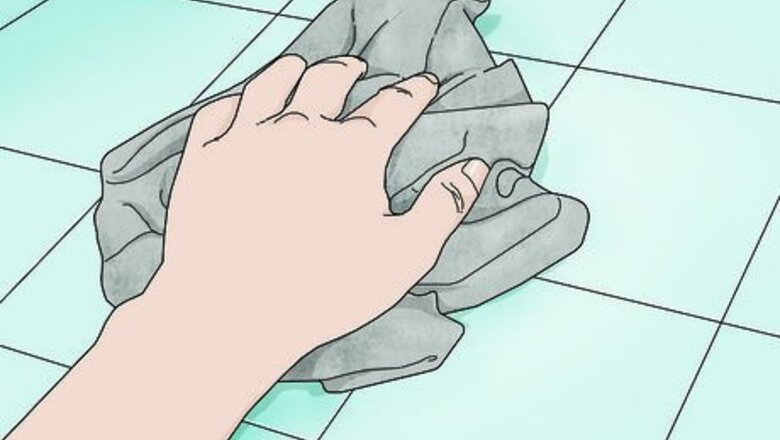
views
Exposing the Valve
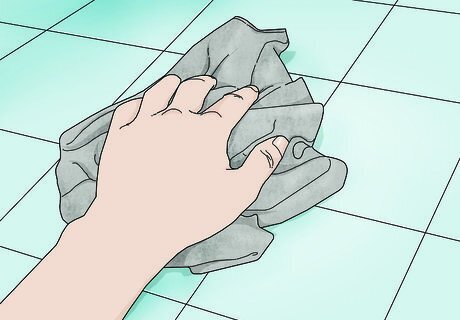
Cover the shower drain with a washcloth. Stretch the cloth over the drain so it is blocked completely. This will prevent screws or other small parts from falling in while you work on the valve. As you remove screws or other parts from the shower, keep them in the same place to avoid losing them.
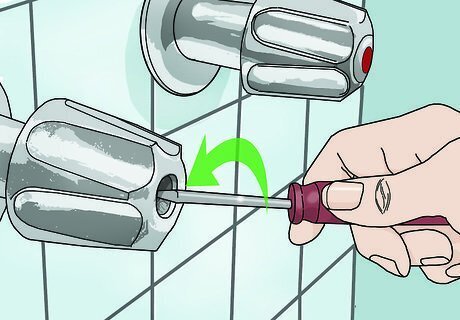
Take the shower handle off. The shower handle usually adheres to the wall by screws. Remove the screws holding the handle in place and lift it off of the handle stem. Set the handle and screws on a flat surface to keep them aside until you're ready to screw them back in later. After you have the screws out, you may need to wiggle or tap on the handle to get it to slide off the stem.
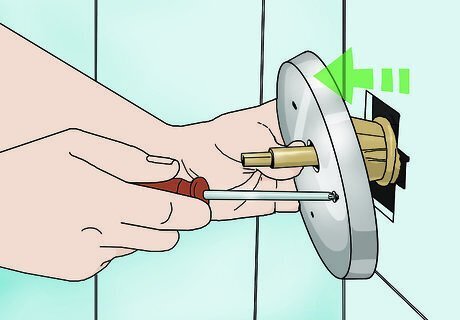
Unscrew the trim plate. The trim plate should be secured to the wall with two screws. Unscrew both sides and lift the trim plate from the wall. Set it and the screws aside, preferably near the shower handle, until you need to screw it back in later on. After you take the handle and trim plate off, you can soak it in vinegar or CLR to remove any built up grime. This will make them look new again. Shower trim plates are usually known as Escutcheon trim plates, in case you need to ask a home repair professional about your specific model.
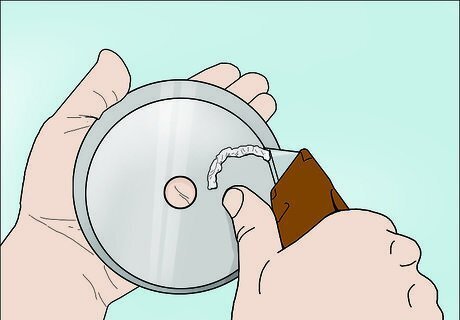
Remove any caulk around the trim plate, if applicable. In some cases, there may be a layer of caulk surrounding the trim plate's edges. If caulk is adhering your trim plate to the wall along with the screws, scrape it off with a utility knife and then lift the trim plate off of the wall. You can purchase caulk online or from most home improvement stores.
Removing the Old Valve

Shut the water off. Before you take the valve out, you'll need to turn off the water to prevent leaks. Locate your shower's water stops and turn them clockwise to shut them off. If your water stops are turned on and off with screws, turn the screw tightly to the left with a screwdriver. The water stops are typically found to the right and left of the valve cartridge. If there are 2 stops for hot and cold water, shut off both. Usually, the water stops will have flat head screw heads that let you turn them on and off. Turn off the water supply to the entire house if you cannot find the water stops for your shower.

Cut an access hole to better reach the valve. After you remove the trim plate, you should see a small opening in the wall. If the wall opening is not at least 12 inches (30 cm) by 12 inches (30 cm), you will need to enlarge it. Depending on whether the wall is made of glass, drywall, tiles, or another material, you will need to cut the hole to size. If you are unsure how to cut the opening, ask a professional repairman. You can also research how to cut a hole safely and easily into your wall's material on a verified home improvement site. The hole should be small enough that you can still cover it with the handle and trim plate later on. Use the trim plate as a guide for the maximum size of your trim plate.
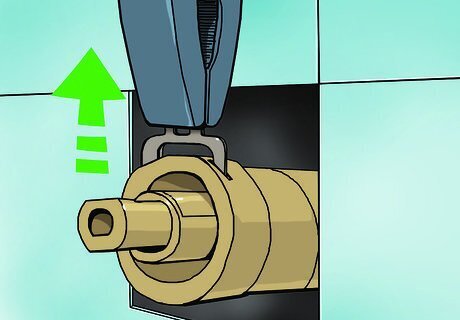
Remove the valve clip with needlenose pliers. Your shower valve should have a metal clip inserted into the top that holds it in place. Lift the clip up and out of place, setting it aside on a flat surface to prevent losing it. If your valve clip is not damaged, you should be able to reuse it while securing the new cartridge in place. If it is, however, your new cartridge should come with its own valve clip. Some valve sets are secured with a retainer nut that holds them in place. To remove the nut, hold the valve while you unscrew the nut with a wrench. You can then proceed with removing your valve.
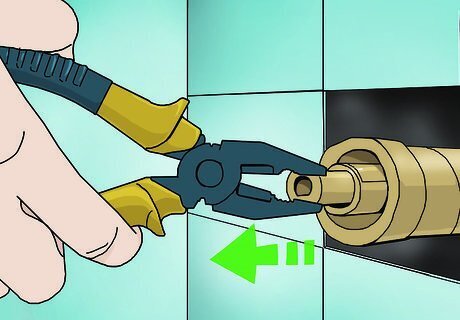
Use pliers to pull the valve out of the wall. Grip the metal end of the valve cartridge firmly and pull the valve back and out of the wall. If it gets stuck at any point, wiggle it as you go to dislodge it. After you take it out of the wall, set it aside or discard it to keep it out of the way. While needlenose pliers can be used for this step, it may be easier with thicker pliers. It's also a good idea to spray it with WD 40. Wait a few minutes, then it should slide out more easily. This will reduce the risk of damaging the valve.
Installing a New Valve
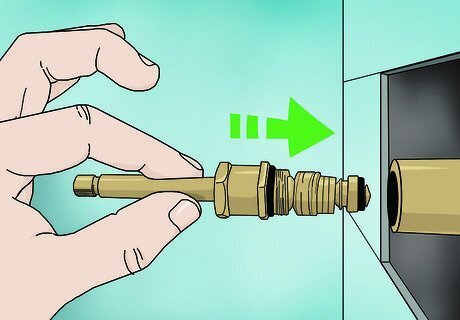
Insert your new valve. Grip the end of the new valve cartridge (which should be identical to the old cartridge) with pliers and slide it back into its slot in the wall. Wiggle the cartridge back and forth if at any point it gets stuck and won't slide any further. If your valve cartridge will not slide into the wall or seems too small for the slot, you may have bought the wrong size. Double-check the valve size and model to make sure it matches your old cartridge. If you notice severe rust and corrosion while changing the shower valve, then you may need to change out the entire tub and shower valve assembly.

Slide the metal clip back into place. Using your needlenose pliers, pick up the new valve's metal clip and insert it into place. It should fit in the same spot as the old valve's metal clip and be inserted from the top.

Turn on the water supply. If you tightened the water stops, loosen them by turning or screwing them to the right. Turn on the water supply to the entire house if you turned off the entire water supply because you couldn't locate the stops. Do this slowly. If something wasn’t installed correctly, you won’t want the leak to burst with water.
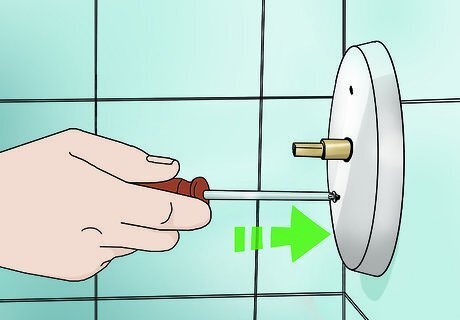
Put the trim plate and handle back in place. Set the trim plate back over the access hole and screw it in place on both sides. If it had a layer of calk securing it around the sides, apply a new layer. Screw the shower handle back in place, turn it on to make sure it works, and remove the cloth from the drain. If you enlarged the wall opening earlier, you should be able to put everything back in place so long as the hole is not larger than the trim plate. Fill the hole back in if you accidentally made it too large.




















Comments
0 comment